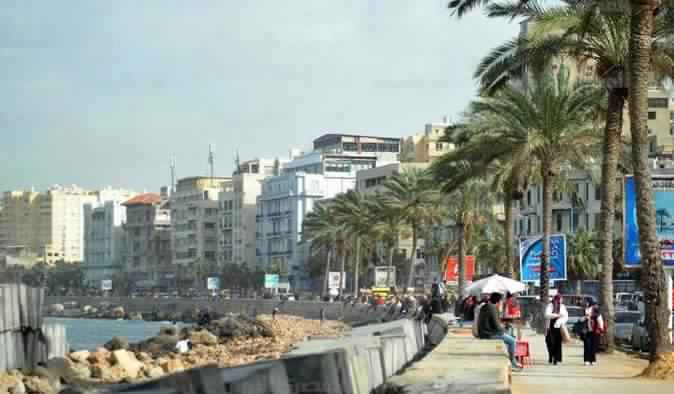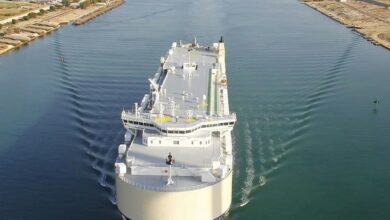
The survival of the elusive, blubbery sea-trawler known as the dugong is hanging in delicate balance amid ever-increasing development, tourism and pollution off of Egypt’s Red Sea coast.
The dugong, a marine mammal in the manatee family, has captured imaginations since the days when their long, soft, cylindrical bodies inspired dreams of mermaids in lonely sailors. Often growing to weigh nearly 1000 pounds, the creatures have also earned names such as “Sea Cow” and “Sea Camel.”
The name that stuck, “dugong,” comes from a Malay word meaning “Lady of the Sea.”
The dugong is spread throughout the Red Sea and Persian Gulf, with its largest population found off the northern coast of Australia. Today, very little data exists about the size of the population in the Red Sea, but the small number there attracts hordes of tourists yearly.
One or two individual dugong live in Abu Dabab bay south of Marsa Alam, and because dugong tend not to stray from small areas, the Abu Dabab dugong have become minor celebrities in the world of diving and snorkeling.
But heavy tourism, even when it is brought in by the dugong itself, could pose a threat to the species.
The Hurghada Environmental Protection and Conservation Association (HEPCA) stated in a report on the dugong that “the extreme tourist pressure in the bay has become a serious concern, with an unsustainable amount of snorkelers and divers.”
Sherif Baha Eddin, one of the founders of the NGO Nature Conservation Egypt (NCE) summed up the various ways increasing human presence along the coast could be affecting the population. “There are plastic bags these animals can ingest. There are boats with propellers that can injure them. If a fisherman caught one, I think they might keep it and eat it. As well, they can be caught in gill nets and drowned,” says Baha Eddin.
Dugong have particularly long life spans, with a life expectancy of 50 years or more, but females are likely to give birth only a few times in the course of their lifetimes. This low birth rate further contributes to the dugong's vulnerability and affects its resilience in the face of myriad threats.
After a year-long gestation, a dugong calf remains under the care of its mother until sexual maturity, which can occur as late as 18 years.
The sea grass on which the herbivorous dugong survives is also under threat. In a paper published by Proceedings of the National Academy of Sciences, climate change, coastal development and degraded water quality were mentioned as causes for the depletion of seagrass meadows across the world, all of which are factors along the Red Sea coast.
But the attraction of dugongs for tourists could serve as a motivation for some to become more active in their protection. Says Baha Eddin, “A lot of the tourism [in Abu Dabab] depends on these two or three animals. It can be beneficial if you have them, motivating you to manage them well.”
Lack of data and the difficulty in locating sparse dugong in the remote coastal regions they tend to occupy has made it hard to calculate how critical the situation is for dugong in the Red Sea today.
“Under threat means you have to have evidence that they are dying, which we do not have,” Tourism Ministry Adviser for Environmental Affairs and Nature Conservation Mostafa Fouda told Al-Mary Al-Youm,
Fouda continued, saying, “This is a very shy animal, and once they feel any disturbance in the water they desert the place quickly,” suggesting dugong may be adept at avoiding threat.
But Fouda admitted some level of threat could exist, saying, “The Red Sea is not the same as before, there are too many ships and tourist boats.”
The only population of dugong which has been studied in detail is off the coast of Queensland, Australia. The results of those studies, presented in a report on the dugong by the International Union for Conservation of Nature (IUCN) Red List, indicate the population in that region declined from 72,000 to 4000 between the 1960s and 1990s, and also identified a significant reduction in the sea grass supply in the area.
While such detailed data does not exist for the Red Sea region, the report states, “The magnitude of these threats is likely to be greater in most other parts of the dugong’s range than in Queensland,” due to Queensland’s small population in comparison to other regions where dugong can be found.
Says Baha Eddin, “You don’t need to actually find the animal to know it is under threat. We know the threats exist, and that their numbers are going down.”
There are, however, efforts being undertaken at least to protect the small dugong population of Abu Dabab. The HEPCA, in partnership with Red Sea Governorate and the National Parks Authority of Egypt, set in place a plan in 2007 to protect the local dugong. The plan involved creating a restricted zone to prevent motor boats within the bay and increasing control over the number of snorkelers and divers allowed into the bay daily.
Such measures should at least improve quality of life for Abu Dabab’s dugong. The plan also put in place a research initiative to map dugong sightings and gather much-needed information about the Red Sea population.




